Exhibition Hall 3
 > Exhibitions > Permanent Exhibition > Exhibition Hall 3
> Exhibitions > Permanent Exhibition > Exhibition Hall 3
-
Exhibition Hall 3
Development of the Republic of Korea(1961 ~ 1987)
Development of the Republic of Korea' chronicles Korea's economic growth and related advances.
-
The exhibit covers the period from the 1960s to 80s, when Korea experienced stellar economic growth and the diversification of popular culture. The Korean people's level of social, political, and cultural consciousness advanced, and the democratization movement reached its peak.
-
Please refer to the image below

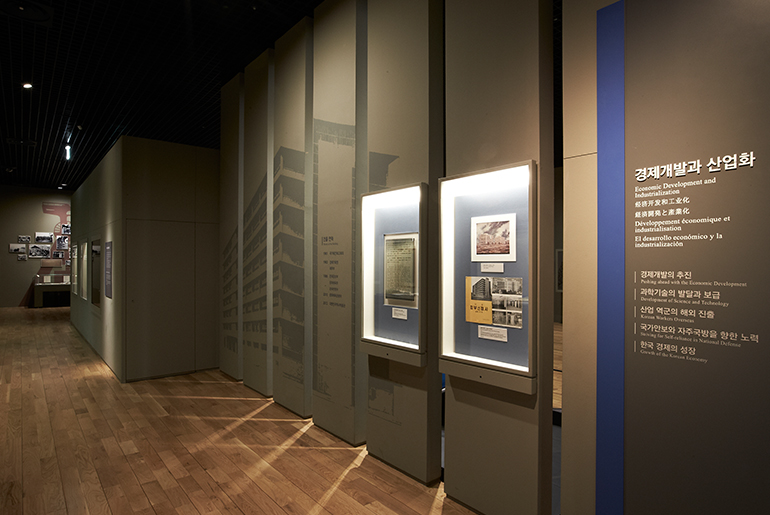 The Museum and the U.S. Embassy are twin buildings built in the 1960s. They are symbols of Korea's economic growth and contemporary history. The Museum building was once home to the Supreme Council for National Reconstruction and the Economic Planning Board, the fountainheads of Korea's economic growth. On display are papers pertaining to the twin buildings' dedication ceremony in 1961.
The Museum and the U.S. Embassy are twin buildings built in the 1960s. They are symbols of Korea's economic growth and contemporary history. The Museum building was once home to the Supreme Council for National Reconstruction and the Economic Planning Board, the fountainheads of Korea's economic growth. On display are papers pertaining to the twin buildings' dedication ceremony in 1961. -
Please refer to the image below

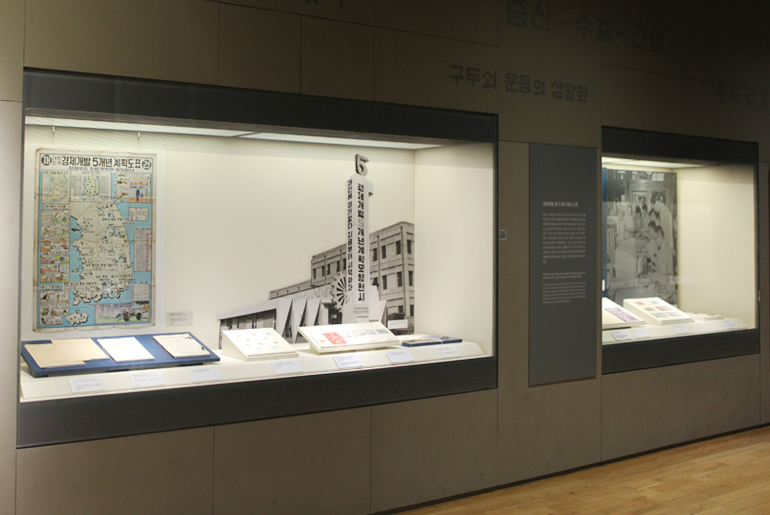 The rapid economic growth of Korea achieved in such a short amount of time owes itself to government-led economic policies—e.g., series of five-year economic development plans, heavy chemical industry promotion policy—and the Korean people's diligence and hard work. This section features historical materials on economic development plans and export promotion policies.
The rapid economic growth of Korea achieved in such a short amount of time owes itself to government-led economic policies—e.g., series of five-year economic development plans, heavy chemical industry promotion policy—and the Korean people's diligence and hard work. This section features historical materials on economic development plans and export promotion policies. -
Please refer to the image below

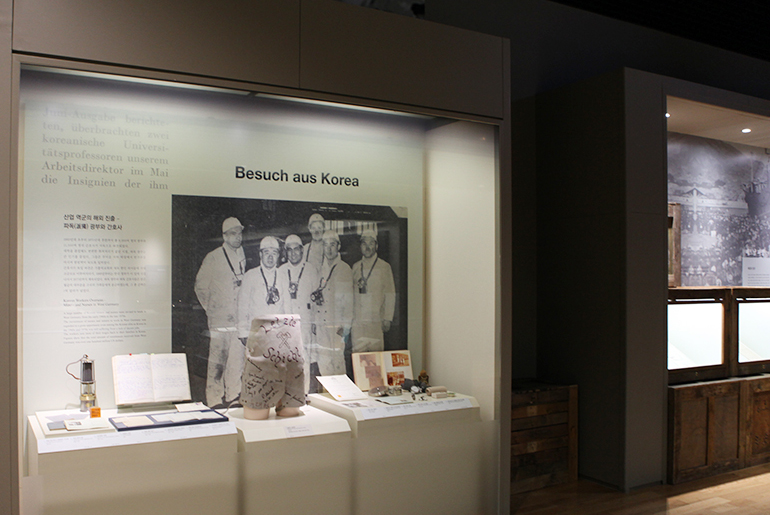 The 'Korean Workers Overseas' section, comprised solely of donated pieces, provides a glimpse into the lives led by miners and nurses dispatched to West Germany and workers dispatched to construction projects in the Middle East. With artifacts such as the paystubs, wire transfer receipts, diaries, and photo albums of miners, the section is aimed at showcasing the diligence and perseverance of Korean overseas workers.
The 'Korean Workers Overseas' section, comprised solely of donated pieces, provides a glimpse into the lives led by miners and nurses dispatched to West Germany and workers dispatched to construction projects in the Middle East. With artifacts such as the paystubs, wire transfer receipts, diaries, and photo albums of miners, the section is aimed at showcasing the diligence and perseverance of Korean overseas workers. -
Please refer to the image below

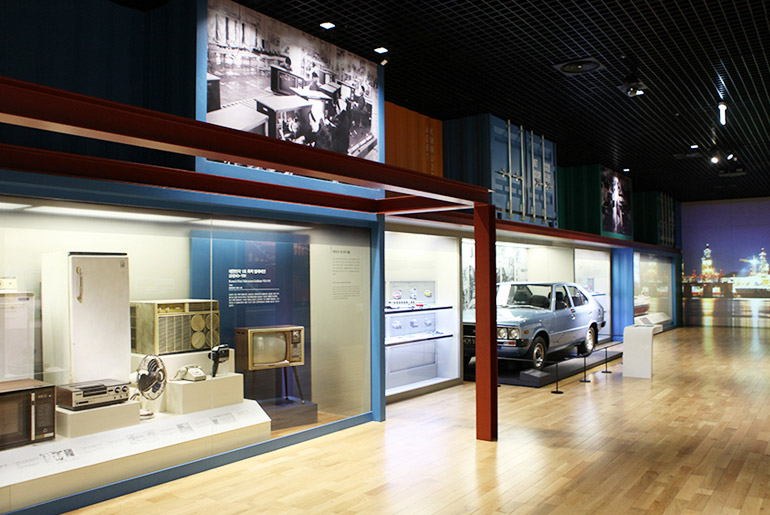 The section's themes—i.e., 'Korea's First' and 'Making the Impossible to Possible'—are architecturally articulated in the H-beam and container motifs incorporated into the exhibit space. On display are the first Korea-made radio and own model car. The section also covers Korea's electronic, automobile, shipbuilding, and steel industries as well as the construction of Gyeongbu Expressway. Pony was Korea’s first original model car, made by Hyundai Motors. It was exported to New Zealand in 1982.
The section's themes—i.e., 'Korea's First' and 'Making the Impossible to Possible'—are architecturally articulated in the H-beam and container motifs incorporated into the exhibit space. On display are the first Korea-made radio and own model car. The section also covers Korea's electronic, automobile, shipbuilding, and steel industries as well as the construction of Gyeongbu Expressway. Pony was Korea’s first original model car, made by Hyundai Motors. It was exported to New Zealand in 1982. -
Please refer to the image below

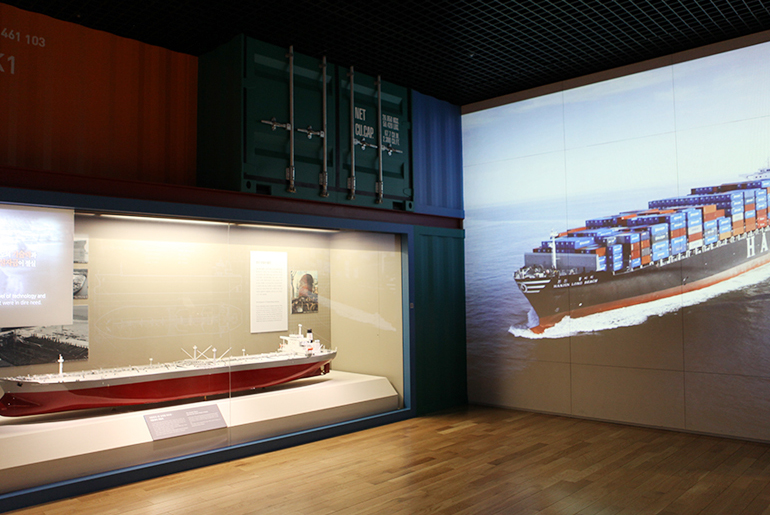 The miniature replica here is the Atlantic Baron, the first oil tanker for which Korea obtained a shipbuilding bid and also the first-ever oil tanker the nation produced. The section also features the anecdote about how founder of Hyundai Chung Ju-yung won a bid for two ships from a Greek shipping company by telling the story of the turtle ship on the 500-won bill. This section's video presentation contains how the Hyundai Mipo Dockyard in Ulsan was built along with the Atlantic Baron.
The miniature replica here is the Atlantic Baron, the first oil tanker for which Korea obtained a shipbuilding bid and also the first-ever oil tanker the nation produced. The section also features the anecdote about how founder of Hyundai Chung Ju-yung won a bid for two ships from a Greek shipping company by telling the story of the turtle ship on the 500-won bill. This section's video presentation contains how the Hyundai Mipo Dockyard in Ulsan was built along with the Atlantic Baron. -
Please refer to the image below

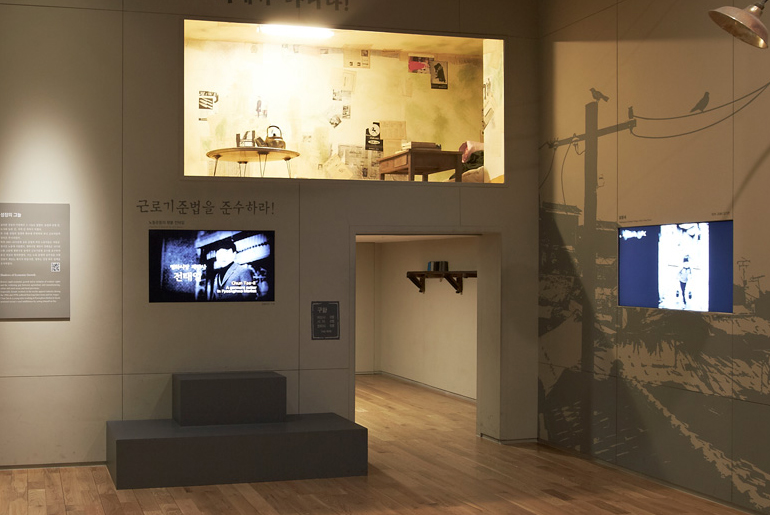 On the flipside of economic growth were dire labor conditions. The recreated interior of a garment factory from the period is aimed at presenting a palpable experience of a typical laborer's life, which would have comprised of 14-hour workdays in front the sewing machine in a dusty, low-ceilinged factory and nights spent in a small second-floor attic. The section's video is about Chun Tae-il and the history of Korea's labor movement.
On the flipside of economic growth were dire labor conditions. The recreated interior of a garment factory from the period is aimed at presenting a palpable experience of a typical laborer's life, which would have comprised of 14-hour workdays in front the sewing machine in a dusty, low-ceilinged factory and nights spent in a small second-floor attic. The section's video is about Chun Tae-il and the history of Korea's labor movement. -
Please refer to the image below

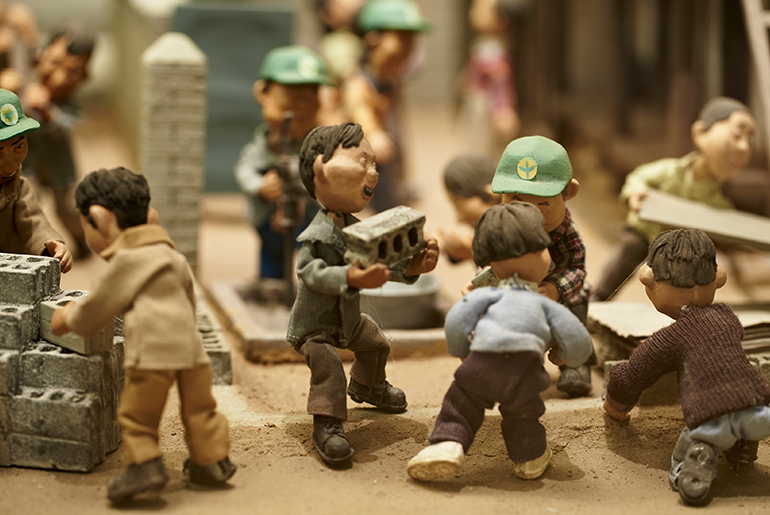 Saemaeul Movement (New Village Movement) is presented as a clay animation video to make the subject more accessible to children and teens. The video features a fun storyline that facilitates the understanding of diligence, self-help, and cooperation, which make up the spirit of Samaeul Movement. In the display case across the clay animation corner are diverse artifacts related to the Samaeul Movement, including a radio that the president presented to the leaders of the movement.
Saemaeul Movement (New Village Movement) is presented as a clay animation video to make the subject more accessible to children and teens. The video features a fun storyline that facilitates the understanding of diligence, self-help, and cooperation, which make up the spirit of Samaeul Movement. In the display case across the clay animation corner are diverse artifacts related to the Samaeul Movement, including a radio that the president presented to the leaders of the movement. -
Please refer to the image below

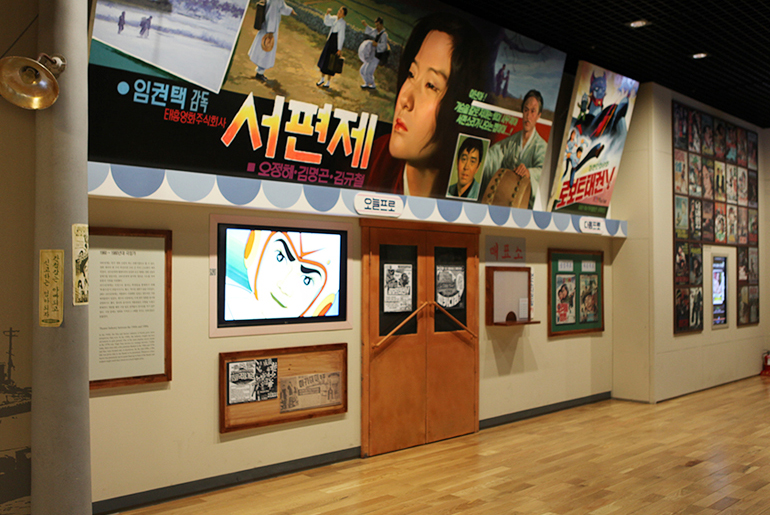 This section has diversification and popularization of culture as its theme. Through the artifacts and video here, including an interesting Daehan News clip on culture, visitors can learn about the period's pop culture, from cinema and music to sports and fashion.
This section has diversification and popularization of culture as its theme. Through the artifacts and video here, including an interesting Daehan News clip on culture, visitors can learn about the period's pop culture, from cinema and music to sports and fashion. -
Please refer to the image below

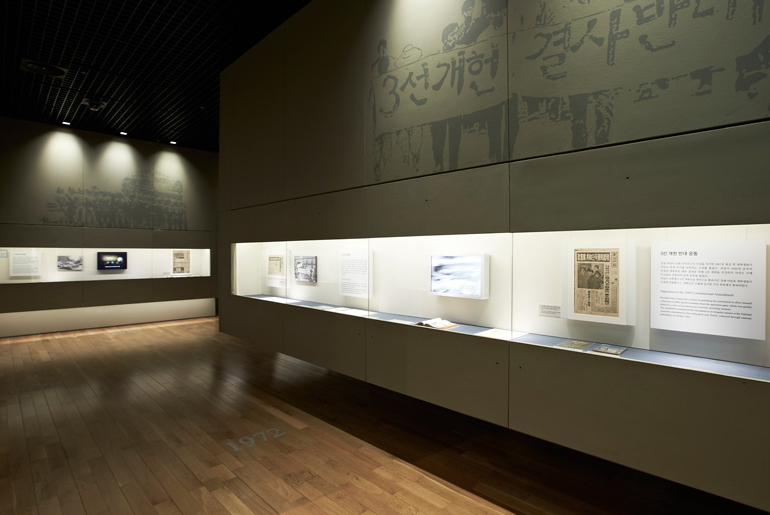 The section on the democratization movement starts with poet Kim Ji-ha's 'With a Burning Thirst.' Artifacts, video, and photographs document the process and flow of the democratization movement from the 1960s to 80s. The dim lighting and long row of display cases are meant to symbolize and underscore the significance of the democratization movement and the sacrifices that ultimately led to Korea's democratization.
The section on the democratization movement starts with poet Kim Ji-ha's 'With a Burning Thirst.' Artifacts, video, and photographs document the process and flow of the democratization movement from the 1960s to 80s. The dim lighting and long row of display cases are meant to symbolize and underscore the significance of the democratization movement and the sacrifices that ultimately led to Korea's democratization. -
Please refer to the image below

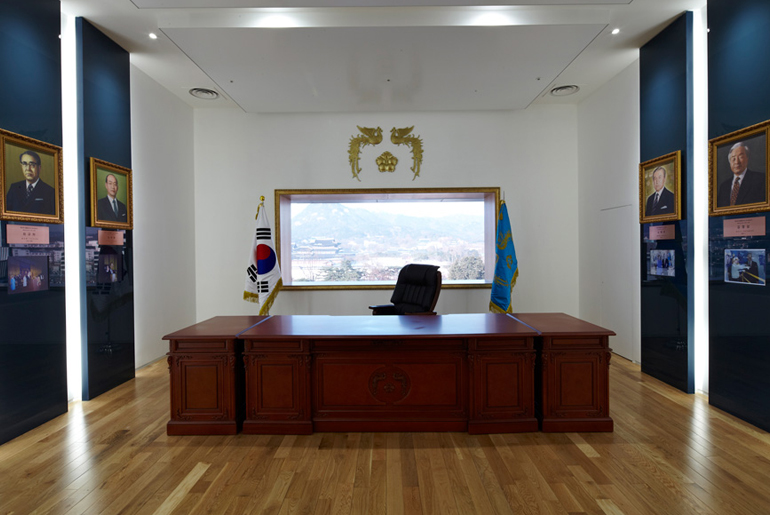 The final section of Exhibition Hall 3 is devoted to the presidents of the Republic of Korea. Visitors can see plaques containing the portraits and tenures of Korea's presidents and through monitors learn about their achievements and activities. Visitors can take pictures at the replicas of the presidential work desk and podium and enjoy a spectacular view of Gyeongbokgung Palace, Blue House, Mount Bukhan, and Mount Inwang through a window designed to look like a giant frame.
The final section of Exhibition Hall 3 is devoted to the presidents of the Republic of Korea. Visitors can see plaques containing the portraits and tenures of Korea's presidents and through monitors learn about their achievements and activities. Visitors can take pictures at the replicas of the presidential work desk and podium and enjoy a spectacular view of Gyeongbokgung Palace, Blue House, Mount Bukhan, and Mount Inwang through a window designed to look like a giant frame.